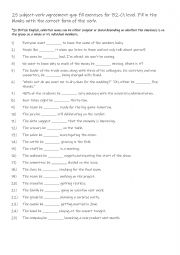
|
25 subject-verb agreement gap fill exercises for B2-C1 level.
25 subject-verb agreement gap fill exercises for B2-C1 level. Fill in the blanks with the correct form of the verb.
*In British English, collective nouns can be either singular or plural depending on whether the emphasis is on the group as a whole or its individual members.
Answers are given with an explanation on page 2.
Level: advanced
Age: 14-100
Type:
Downloads: 126
|
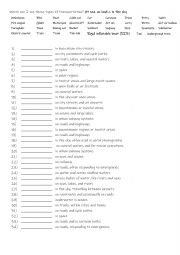
|
A2 + B1+ 34 types of transportation and where you can see them
Students match the type of transportation to the correct definition and place where they can be found. There are some new types such as Segway, Drone and Electric scooter etc. Answers on page 2.
Level: intermediate
Age: 8-100
Type: worksheet
Downloads: 118
|
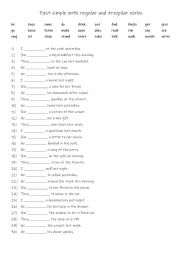
|
A1 Past simple regular & irregular verbs
Students read the sentences and use one of the given infinitives in bold to complete the gap-fill. Answers on page 2
Level: elementary
Age: 8-100
Type:
Downloads: 111
|
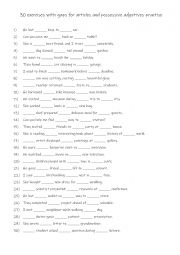
|
Articles and possessive adjectives practise
Students read the sentences and work out what article ( a, an , the) is needed and what possessive adjective is needed according to the subject. Answers on page 2
Level: elementary
Age: 8-100
Type:
Downloads: 107
|
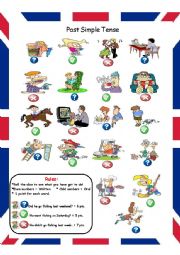
|
Past Simple Tense
An enjoyable speaking and writing supplement to reinforce asking questions, answering using both affirmative and negative sentences. To get a mixture of both oral and written work I normally have something small enough to hide in my hand. If the object is in the hand not selected, they have to write the sentence. To encourage students, I usually gi...
Level: elementary
Age: 9-100
Type: worksheet
Downloads: 217
|
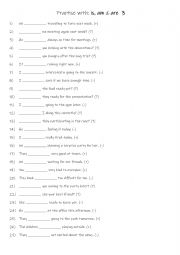
|
A1 Practise with is, am & are 3
Students read the sentence and complete the sentence with the correct form of the verb to be. They use the (+) or (-) sign at the end of the sentence to see if it needs a positive or negative form of the verb to be. Each form is used 3 times! Answers on page 2.
Level: elementary
Age: 7-100
Type:
Downloads: 118
|
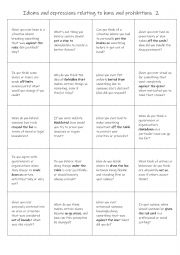
|
B1+-C1 Idioms and expressions relating to bans and prohibitions 2
This is a speaking reinforcement activity to supplement the other worksheet I uploaded on 10/2/2025. Students working in pairs or small groups can either ask each other the questions or answer the question themselves.
Level: intermediate
Age: 12-100
Type:
Downloads: 110
|
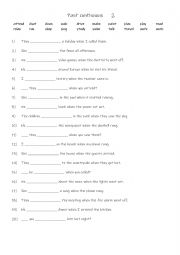
|
Past continuous 2
Learning the past continuous tense is important because it helps students describe actions that were in progress at a specific time in the past. It adds context and detail to storytelling, allowing for clearer descriptions of ongoing past events or interrupted actions. Mastering the past continuous improves fluency and accuracy in both speaking and...
Level: elementary
Age: 7-100
Type:
Downloads: 111
|
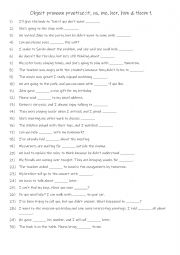
|
A1-A2 Object pronoun practise: it, us, me, her, him & them 1
Practising object pronouns like it, us, me, her, him, and them is essential for building clear and natural sentences in English. Object pronouns replace nouns to avoid repetition and make sentences smoother, which is crucial for effective communication. By mastering these, you can better describe actions involving people and things, making everyday...
Level: elementary
Age: 7-100
Type:
Downloads: 112
|

|
7 verbs for reporting with suggestions, agreements & disagreements 1 c
First, students need to familiarise themselves with the verbs and check their meaning and use. Then they read the sentences to see which verb is needed to complete the sentence. Each verb is used 3 times! Answers on page 2.
Level: elementary
Age: 9-100
Type:
Downloads: 121
|












